Florida Frontiers Articles
Florida Frontiers: The Weekly Newspaper Articles of the Florida Historical Society is a weekly newspaper article covering history-based events, exhibitions, activities, places and people in Florida. The newspaper articles premiered in January 2014. We explore the relevance of Florida history to contemporary society and promote awareness of heritage and culture tourism options in the state.
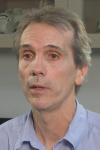
About 1,000 years ago, agricultural communities were established in what would become the Southeastern and Midwestern United States, and the Mississippian culture flourished.
Keith Ashley is an archaeologist and research coordinator at the University of North Florida in Jacksonville. Ashley’s research is demonstrating a link between Native Floridians and the thriving Mississippian culture.
Ashley and his research are featured in the latest episode of the television series “Florida Frontiers,” airing this month on PBS affiliates throughout the state. The program is also available online at myfloridahistory.org.
... click title or here for the full article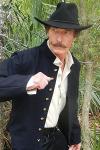
Before the annual presentation of “Mosquitos, Alligators, and Determination” begins, Lady Gail Ryan engages audience members, finding out where they are from and leading them in a high spirited “sing along” of Florida songs including “Where the Orange Blossoms Grow” and “She’ll Be Comin’ Down the Shell Road.”
“Come early,” Ryan says. “The pre-program begins the minute the audience arrives. Music will help tell about historical events with songs the audience can sing.”
The tenth annual production of “Mosquitos, Alligators, and Determination” will be held this weekend and next, with matinee performances at 2:30 pm, August 5, 6, 12, and 13 a... click title or here for the full article
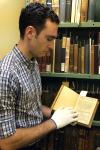
Beginning Saturday, July 29, the exhibition “Florida Before Statehood” will be on display at the Brevard Museum of History and Natural Science, 2201 Michigan Avenue, Cocoa. The opening event begins at 2pm with a presentation by historian Ben DiBiase, director of educational resources for the Florida Historical Society.
“It covers Florida history from the Ice Age to the modern day,” says Madeline Calise, museum manager at the Brevard Museum of History and Natural Science. “We take a look at Spanish exploration, early settlers and their challenges, the mission period of Florida, the British period, and a little bit about all the flags that Florida has flown under and the impacts that those di... click title or here for the full article
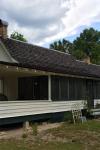
A visit to the Marjorie Kinnan Rawlings Historic State Park in the rural community of Cross Creek is like a trip back in time to the 1930s. The home there is furnished just as Rawlings had it when she was writing her Pulitzer Prize winning novel “The Yearling,” her autobiography “Cross Creek,” and other works depicting the lives of Florida Crackers.
Rawlings’s typewriter and notes sit on a table on the front porch, along with her ashtray and a pack of Lucky Strikes cigarettes, as if the writer has just gotten up to get a glass of iced tea from the kitchen.
Each room of the house contains furniture and personal items that belonged to Rawli... click title or here for the full article
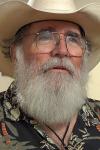
Renowned Florida photographer Clyde Butcher suffered a stroke on May 6, which affected his speech and coordination on his right side. Butcher’s rehabilitation is going well, and he expects to be back at work in the fall.
The black and white photographs of Clyde Butcher allow us to look at the natural Florida in a different way.
When most people think of Florida’s natural environment, an explosion of color comes to mind. We imagine multiple shades of green in a Florida swamp, bright red Poinciana trees, and the turquoise waters of the Gulf Coast. We picture the oranges, purples, pinks, and blues of the Florida sky.
... click title or here for the full article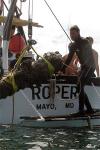
Every Fourth of July, Floridians celebrate Independence Day with cookouts, hometown parades, and of course, fireworks as America’s victory over the British in the American Revolution is commemorated.
Not all American colonists supported the war, though. Many remained dedicated to King George III and England. As the American Revolution progressed, these Loyalists became refugees and were forced to flee the colonies.
From 1763 to 1783, Florida remained under British control; so many Loyalists came here from the American colonies to the north.
On December 17, 1782, as the end of the Ameri... click title or here for the full article
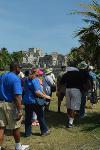
The Cross-Gulf Travel Theory proposes the idea that the ancient Maya came to southwest Florida when devastating droughts occurred on the Yucatán Peninsula of Mexico as early as the ninth century, and that they ended up around Lake Okeechobee.
The Maya may have believed that they were following their god to Florida.
Images of the Oculate Being can be traced in ancient cultures from South America to Mexico. Different cultures separated by distance and time develop a very similar deity who is usually pictured flying, has what art historians call “goggle eyes,” and is associated with agriculture, particularly the growing of corn.
... click title or here for the full article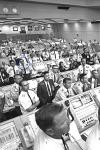
The Apollo 11 spacecraft launched from Cape Canaveral on July 16, 1969. Four days later, humans walked on the surface of the moon for the first time.
A team of thousands was required to make that lunar mission a success. Dr. Al Koller was a member of that team, working in the Firing Room.
“I served as the remote eyes for the top management of NASA and the stage contractors for the operations at the launch pad three miles away,” says Koller. “We did that using sixty-one video cameras, all black and white, mounted on the pad service and at all key levels of the 363 foot-tall launch tower. My job was to direct the camera crew by selecting the right cameras to keep track of the key technical work underway and to provide the best possible video views of any troubleshooting taki... click title or here for the full article
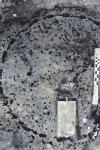
When Juan Ponce de León sailed into the mouth of the Miami River in 1513, he encountered a large Tequesta Indian village.
Pedro Menéndez de Avilés attempted to convert the Tequesta to Christianity, establishing a short lived mission at the village in 1567. Another failed mission was established there in 1743. The Spanish could not persuade the Tequesta to abandon their ancient belief system.
The native people of Florida were almost completely wiped out by unfamiliar diseases brought by the Europeans.
“With weakened tribes, the Spanish borders of Florida were fully breached by the English who instigated Creek raids as far south as Key West, enslaving thousands of Indians for the plantations of the Carolinas and Georgia,” says archaeologist Robert S. Carr. “By 1763, w... click title or here for the full article
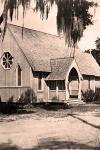
Today, parking in downtown Cocoa can be at a premium when services or special events are held at St. Mark’s Episcopal Church.
When the church was first built in 1886, many in the congregation would arrive by water, mooring their boats on the banks of the Indian River. It’s just a few steps from the river’s edge to the front door of the church. Others would walk to church from homes along the river.
The first meeting of what would become St. Mark’s Episcopal Church was held on June 2, 1878. The Right Reverend John Freeman Young, Bishop of Florida, and Dr. William H. Carter of Holy Cross Church of Sanford, gathered the founding members of the church at the home of A.L. Hatch in Rockledge. Dr. Carter later moved to Tallahassee, but services continued to be held by various pri... click title or here for the full article
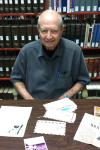
American war veterans and the conflicts they participated in are well represented in the archive at the Library of Florida History in Cocoa.
The Joseph Marshall Papers detail the activities of a Loyalist regiment in St. Augustine during the American Revolution of the 1770s and ‘80s.
The archive houses the East Florida Constitution, created as a result of the United States invasion of Spanish East Florida in 1812, during the Patriot War.
There are dozens of letters and journals from the Seminole Wars of the 1800s, including the journal of Jacob Mott, a U.S. Army Surgeon stationed in Florida.
Numerous Civil War documents from the 1860s include letters from Confederate General Robert E. Lee, and future Florida governor Francis P. Fleming.
The library’s co... click title or here for the full article
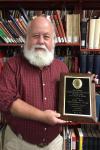
Brevard County is home to an impressive list of important archaeological excavations including a unique prehistoric pond cemetery, numerous Indian mounds, paleontological sites, colonial era shipwrecks, and pioneer homesteads.
Since 1953, members of the Indian River Anthropological Society have been participating in the discovery, excavation, and recording of archaeological sites in Brevard County.
“Operating primarily in Brevard County, we have, over the years, also provided services in Volusia, Seminole, Orange, Osceola, and Indian River Counties,” says Bob Gross of the Indian River Anthropological Society. “IRAS provides, at no cost to the Brevard County government and its municipalities, many tasks required by statute under the provisions of the National Historic Prese... click title or here for the full article
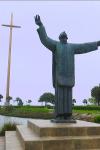
Funeral services were held for Florida historian Michael Gannon on Saturday, May 6, at St. Augustine’s Church in Gainesville. He died on Monday, April 10, at the age of 89.
Dr. Gannon was author or editor of 10 books, including “The Cross in the Sand” from 1965. It that book, Gannon demonstrated how the “real” first Thanksgiving happened in St. Augustine in 1565, decades before the pilgrims landed at Plymouth Rock.
A longtime professor of history at the University of Florida in Gainesville, Dr. Gannon taught several generations of Florida historians who are working in the state today.
Gannon was formerly a Catholic priest, and was working in St. Augustine in the early 1960s, as the town was preparing to commemorate the 400th anniversary of the founding of America’s... click title or here for the full article
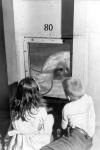
More than three decades before SeaWorld opened in Orlando in 1973, Marineland of Florida was a major tourist attraction, hosting as many as 900,000 visitors annually.
Located between St. Augustine and Daytona Beach, Marineland started out as Marine Studios. Business partners W. Douglas Burden, Sherman Pratt, Cornelius Vanderbilt Whitney, and Ilya Tolstoy (grandson of Leo Tolstoy) envisioned a venue for filming underwater sequences for movies, but quickly realized the potential of the facility as a tourist destination.
“Marineland illustrated the connection between nature and spectacle,” says Florida historian Gary Mormino, author of the book Land of Sunshine, State of Dreams: A Social History of Modern Florida. “They originally conceived as Marine Studios as a motion pictu... click title or here for the full article
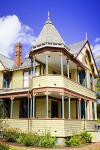
The phrase “historic preservation” describes a wide range of activities.
The term is most often used in relation to the restoration and maintenance of historic homes and buildings, but it can also be applied when discussing the conservation and storage of old photographs, the recording and sharing of oral histories, or the collection and documentation of artifacts from archaeological sites.
All of these topics and more will be presented during “The Many Faces of Preservation Conference,” to be held Friday, April 28, through Sunday, April 30, at St. Gabriel’s Episcopal Church in Titusville. Registration information is available at 321-626-5224 or www.pritchardhouse.com.
“Preservation has many faces,” says historic preservationist and conference organizer Roz Foster.... click title or here for the full article
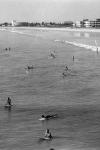
Surfing has been ingrained into American popular culture since the 1960s. Even people who have never touched a surfboard have been influenced by the music, movies, and philosophy of the surfing community.
Since the mid-twentieth century, Cocoa Beach has been a prominent home for surfing in Florida.
On Friday, April 21, the new temporary exhibition “Surfin’ FLA: Celebrating Surfing in Cocoa Beach and the Sunshine State” will open at the Brevard Museum of History and Natural Science, 2201 Michigan Ave., Cocoa. Tickets are $15 and include a wine and cheese reception from 6pm-8pm, with special guests and admission to the museum. Reservations are available at www.myfloridahistory.org.
“Surfing was in Hawaii for centuries, and then it slowly started to make its way over t... click title or here for the full article
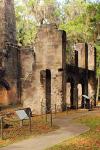
The coquina walls of the Bulow Plantation stand in ruins, and only the foundation of the Mala Compra Plantation remains. Both ruins are remnants from early nineteenth century Florida.
The 150 acre Bulow Plantation Ruins State Park is located three miles west of Flagler Beach. Mala Compra is on North Oceanshore Boulevard in Palm Coast.
In 1821, Charles W. Bulow purchased nearly 5,000 acres of land in what is now Flagler County.
“The Bulow Plantation was one of the largest plantation enterprises in territorial Florida,” says Al Hadeed, local historian and Flagler County attorney. “It was very successful because its major crop was sugar. Sugar was very, very expensive and very prized. Sugar was also used to make rum, so it had a lot of different uses. He was very succe... click title or here for the full article
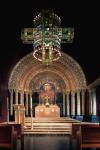
In the early 1880s, Loring A. Chase and Oliver Chapman bought much of the land that would become Winter Park. Over the next few years a railroad station and several hotels were built, and Winter Park became a popular vacation destination for wealthy northerners.
Rollins College was built in 1885 by the Congregational Church. The college acquired its current emphasis on the liberal arts under the direction of Hamilton Holt, president of Rollins from 1925 through 1949.
Winter Park was incorporated in 1887.
Wealthy benefactors helped contribute to the growth of Winter Park into the twentieth century. Businessman Francis Knowles is remembered in the name of the chapel that is the centerpiece of Rollins College, entrepreneur Franklin Fairbanks has a major road named for... click title or here for the full article
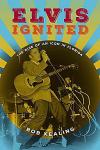
Bob Kealing is probably best recognized in Central Florida as a longtime reporter for WESH Channel 2. He is also the author of four well respected books on Florida history and culture.
Kealing will discuss his new book “Elvis Ignited: The Rise of an Icon in Florida,” on Saturday, April 1, at 2:00 pm, at the Library of Florida History, 435 Brevard Avenue, Cocoa. The free presentation is open to the public.
In his books, Kealing explores the lives of people with strong Florida connections, who each had a significant impact on popular culture.
“Kerouac in Florida: Where the Road Ends” looks at the life of Beat Generation writer Jack Kerouac, who was living and working in Florida when his most famous works were published. “Calling Me Home: Gram Parsons and the Roots of... click title or here for the full article
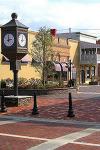
The three block area of downtown Sanford has more than 20 buildings listed in the National Register of Historic Places. Most of the buildings were constructed in the late 1800s, and the newest one was built in 1923. All of the buildings in Sanford’s downtown historic district are remarkably well preserved.
The residential area directly adjacent to downtown Sanford is also designated as an historic district, with many early twentieth century houses listed in the National Register of Historic Homes.
Sanford has a turbulent history dating from the 1830s, with periods of prosperity alternating with prolonged periods of economic hardship.
Like many Florida towns, Sanford was built around a fort constructed during the Second Seminole War. Fort Mellon was constructed at th... click title or here for the full article
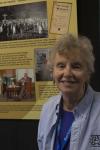
The third and final presentation in the “Second Saturdays with Stetson Series” is Saturday, March 11, at 2:00 pm, at the Brevard Museum of History and Natural Science, 2201 Michigan Avenue, Cocoa. The free talk, presented in conjunction with the temporary exhibition “Stetson Kennedy’s Multicultural Florida” will feature Kennedy’s widow, author and educator Sandra Parks.
The items on display in the exhibition “Stetson Kennedy’s Multicultural Florida” include artifacts and images reflecting the diverse Florida communities that folklorist, author, and activist Stetson Kennedy documented throughout the state in the 1930s and ‘40s. Kennedy interviewed Greek sponge divers in Tarpon Springs, Latin cigar rollers in Ybor City and Key West, African American turpentine industry workers, Cra... click title or here for the full article
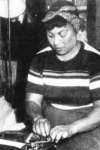
The Historic Rossetter House Museum and Gardens, 1320 Highland Ave., Eau Gallie, is hosting the presentation “Zora in Brevard,” Saturday, March 4, at 10:00 am and 2:00 pm. The $15 ticket includes a discussion about Zora Neale Hurston’s life and work, a portrayal by actress Lila Marie Hicks, and a tour of the Rossetter House. Reservations are available at 321-254-9855.
On July 9, 1951, writer, folklorist, and anthropologist Zora Neale Hurston wrote in a letter to literary agent Jean Parker Waterbury: “Somehow, this one spot on earth feels like home to me. I have always intended to come back here. That is why I am doing so much to make a go of it.”
It would be natural to assume that Hurston was writing about her adopted hometow... click title or here for the full article
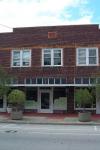
There is a road in downtown Orlando called Division Street. It has traditionally been the dividing line between the predominately white community to the east, and the African American community to the west.
As downtown Orlando was established in the late 1800s, a separate but parallel black community emerged. By the early twentieth century, the Parramore neighborhood included several blocks of prosperous black owned businesses including a tailor shop, a theater, and attorney’s offices. There were African American physicians, dentists, photographers, and other professional people. Churches were integral to the community.
In 1929, a prominent black physician named William Monroe Wells opened the Wells’Built Hotel on South Street.
“He came here in 1917 from Fort Gaines... click title or here for the full article
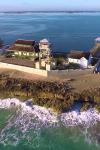
Imagine you are on a boat traveling south along Florida’s east coast. A brief but violent storm hits and your boat sinks. You manage to swim to shore. Exhausted from fighting with the sea and believing you are now safe, you fall asleep on the beach.
When you wake up, you realize your ordeal has just begun.
The hot Florida sun has already burned your skin. You are covered with bites from sand fleas and mosquitoes. You stumble inland to find undeveloped scrubland as far as the eye can see, and no source of fresh water in sight.
It’s the late 1800s, and the entire population of Florida is less than 270,000 people.
Luckily for you, one of those people is the keeper of a remote House of Refuge, and he is patrolling the shoreline nearby. He will find you soon, and... click title or here for the full article







